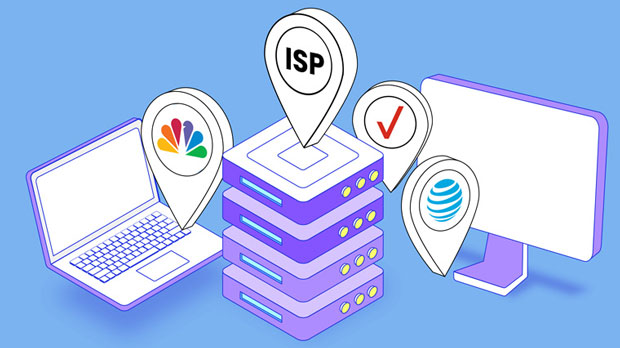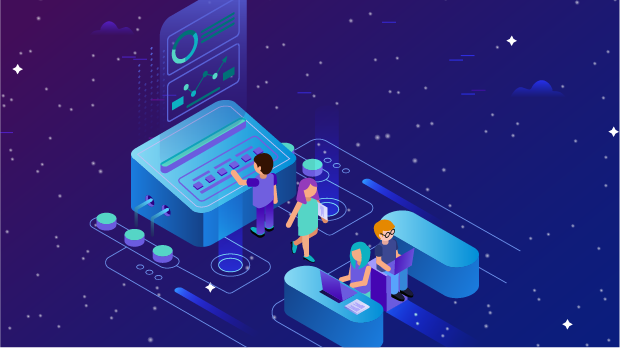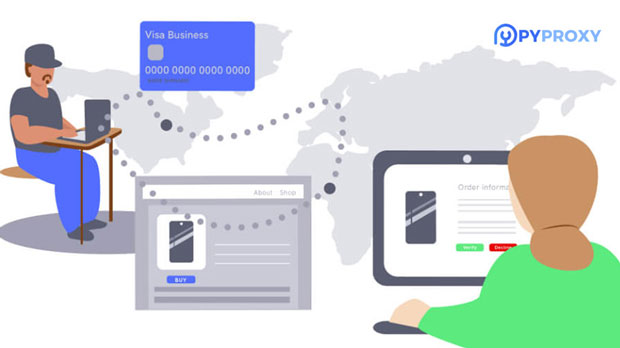What are the usual prices for SOCKS5 proxy? How to choose the right package?
socks5 proxies have become increasingly popular for various online activities that require anonymity, security, and flexibility. However, when it comes to pricing and choosing the right plan, users often face confusion. The price of SOCKS5 proxies varies based on several factors such as the number of IP addresses, bandwidth, and additional features like encryption. In this article, we will explore how much SOCKS5 proxies typically cost and provide a guide to selecting the best plan based on your needs, whether for personal browsing, business use, or data scraping. What Is socks5 proxy?Before delving into pricing, it’s important to understand what SOCKS5 proxies are and why they are in demand. A SOCKS5 proxy acts as an intermediary between your device and the internet. It routes traffic through a remote server, allowing you to mask your IP address, bypass geographical restrictions, and enhance privacy and security. SOCKS5 supports a range of applications, including web browsing, email, gaming, and file sharing. Unlike earlier versions, SOCKS5 offers advanced features like UDP (User Datagram Protocol) support, making it suitable for streaming and real-time communication.Factors Influencing the Price of SOCKS5 ProxiesSeveral factors contribute to the price of SOCKS5 proxies. Understanding these factors can help you make an informed decision about which package suits your requirements.1. Number of IP AddressesThe number of IP addresses you need will significantly affect the cost of your SOCKS5 proxy. For personal use or occasional browsing, a single IP address may suffice. However, for businesses or individuals needing to manage multiple connections or engage in activities like web scraping or SEO, a larger pool of IP addresses is necessary. Providers often offer bulk packages, with costs reducing per IP address as the quantity increases.2. Bandwidth and SpeedAnother critical factor is the bandwidth and speed associated with the SOCKS5 proxy. Higher bandwidth and faster speeds usually come with a higher price tag. For most users, standard bandwidth is sufficient. However, if you plan to engage in high-volume data scraping, streaming, or gaming, opting for a plan with higher bandwidth and guaranteed faster speeds would be necessary.3. Location of ServersThe location of the servers you are accessing will also influence the price. Proxies based in high-demand regions, such as the United States, Europe, or Asia, tend to be more expensive than those based in less popular countries. If you need proxies for activities like accessing region-locked content or managing localized SEO, then choosing servers in specific regions may incur additional costs.4. Additional FeaturesMany SOCKS5 proxy providers offer additional features like advanced encryption, rotating IP addresses, or dedicated IPs for a higher price. Encryption ensures your data is secure while passing through the proxy, making it ideal for activities that require a higher level of privacy, such as business transactions or accessing sensitive information. Some plans may also include IP rotation features, ensuring that your proxy IP address changes periodically, which is useful for tasks like web scraping or bypassing IP-based blocking.5. Subscription DurationPricing for SOCKS5 proxies is often dependent on the duration of the subscription. Monthly subscriptions are typically more expensive than long-term commitments. If you plan to use SOCKS5 proxies for an extended period, opting for a yearly or multi-year plan can help reduce the overall cost.Typical Pricing ModelsSOCKS5 proxy providers usually offer different pricing tiers based on the factors mentioned above. Below is an overview of the general pricing structure:1. Basic PackagesFor personal or low-traffic users, basic SOCKS5 proxy packages typically start at around $1 to $3 per month for a single IP address. These packages usually offer limited bandwidth and speeds, suitable for browsing or occasional online tasks.2. Intermediate PackagesIntermediate packages, which cater to small businesses or users who need more bandwidth, typically cost between $5 to $15 per month. These plans often provide multiple IP addresses, moderate speeds, and access to proxies located in different countries.3. Premium PackagesPremium SOCKS5 proxy packages are designed for heavy users, such as those involved in web scraping, SEO, or streaming. Prices for these plans typically start from $20 per month and can go up to $50 or more, depending on the number of IP addresses, server locations, bandwidth, and additional features such as dedicated IPs or encryption.How to Choose the Right SOCKS5 Proxy Plan?Choosing the right SOCKS5 proxy plan requires a careful evaluation of your needs. The wrong choice can lead to unnecessary costs or underperformance. Below are some key considerations to help you select the appropriate plan.1. Determine Your Use CaseThe first step in choosing a SOCKS5 proxy plan is to determine how you intend to use the proxy. If you need a proxy for basic browsing, a basic package with one or a few IP addresses will suffice. However, if you’re planning to scrape data or manage a business with multiple users accessing the internet simultaneously, you’ll need a plan with higher bandwidth, faster speeds, and multiple IP addresses.2. Consider ScalabilityIf you anticipate that your usage needs will grow over time, it’s essential to consider scalability when choosing a plan. Opt for a provider that allows easy upgrades or changes to your plan. Many providers offer flexibility in terms of adding extra IP addresses or increasing bandwidth at a later stage without much hassle.3. Budget ConstraintsPricing is a crucial factor, especially if you have a tight budget. While cheaper plans may seem appealing, they often come with limitations such as slower speeds or unreliable uptime. On the other hand, expensive plans may provide features you don’t need. It’s important to strike a balance between your budget and your needs.4. Check for Additional CostsSome SOCKS5 proxy providers may have hidden fees, such as for additional bandwidth usage, extra IPs, or advanced features. Make sure to carefully review the pricing details and understand what’s included in the plan and what may incur extra charges.5. Test the Service Before CommittingMany SOCKS5 proxy providers offer trial periods or money-back guarantees. It’s always a good idea to take advantage of these offers to test the proxy service before committing to a long-term plan. This allows you to evaluate the performance, reliability, and compatibility of the proxy with your needs.ConclusionSOCKS5 proxies provide a flexible and secure way to enhance your online privacy and bypass geographical restrictions. The price of SOCKS5 proxies can vary depending on several factors, such as the number of IP addresses, bandwidth, and additional features. By carefully considering your usage requirements, budget, and potential future growth, you can choose the right plan that offers the best value for money. Whether you are a casual user or a business with high-demand internet needs, understanding these factors will help you make a more informed decision and ensure that you get the most out of your SOCKS5 proxy service.
2025-01-08

























































